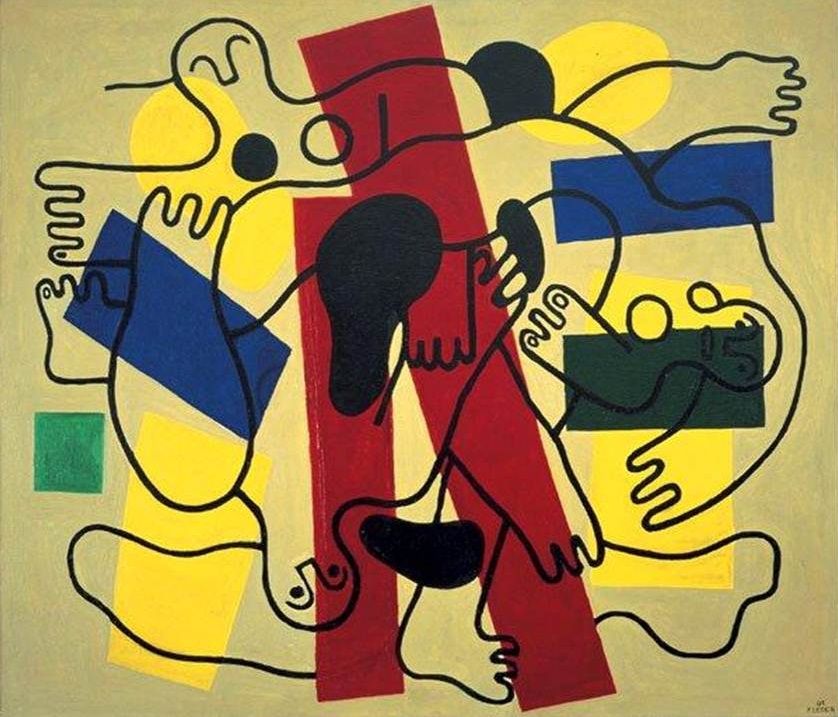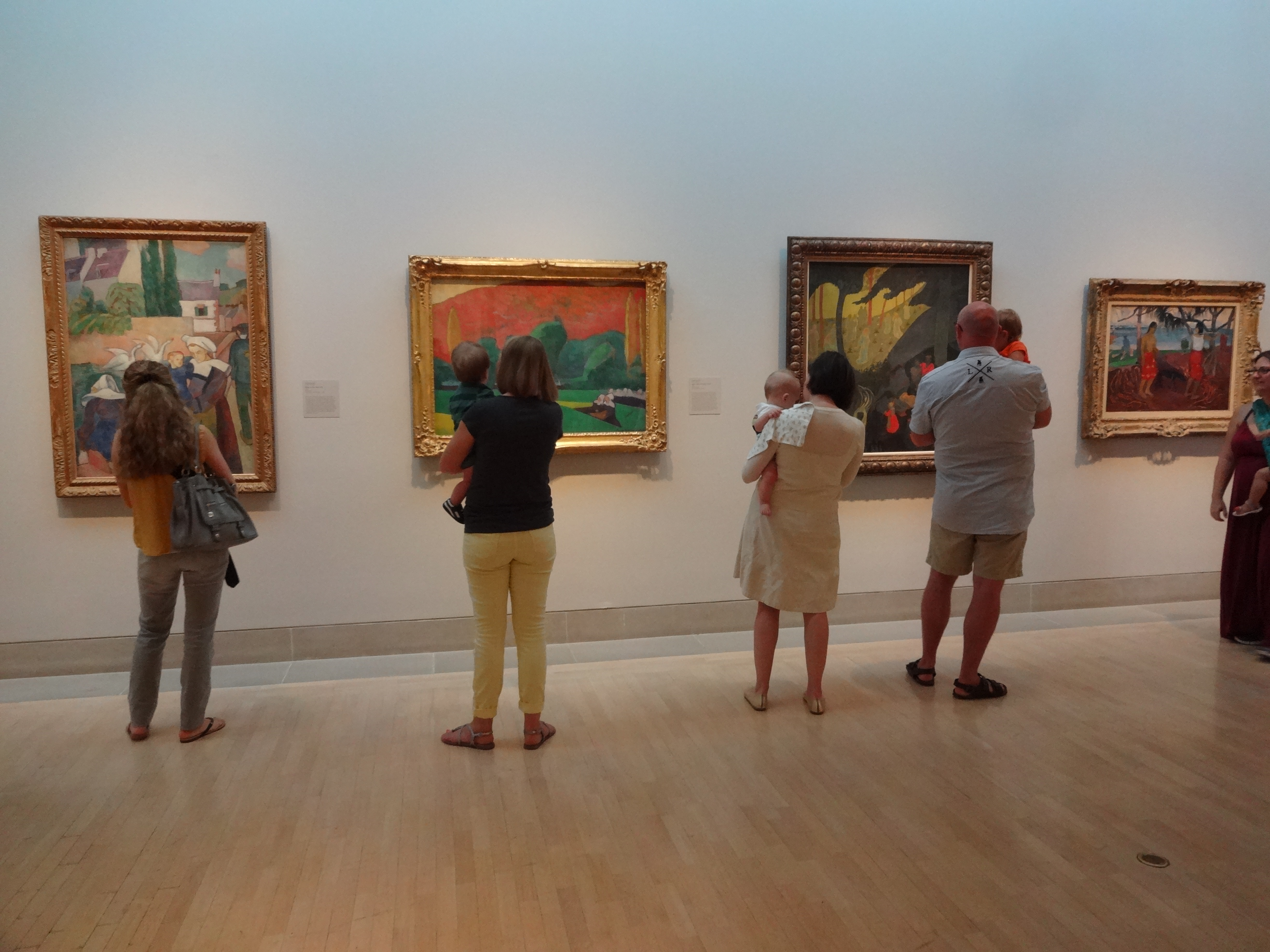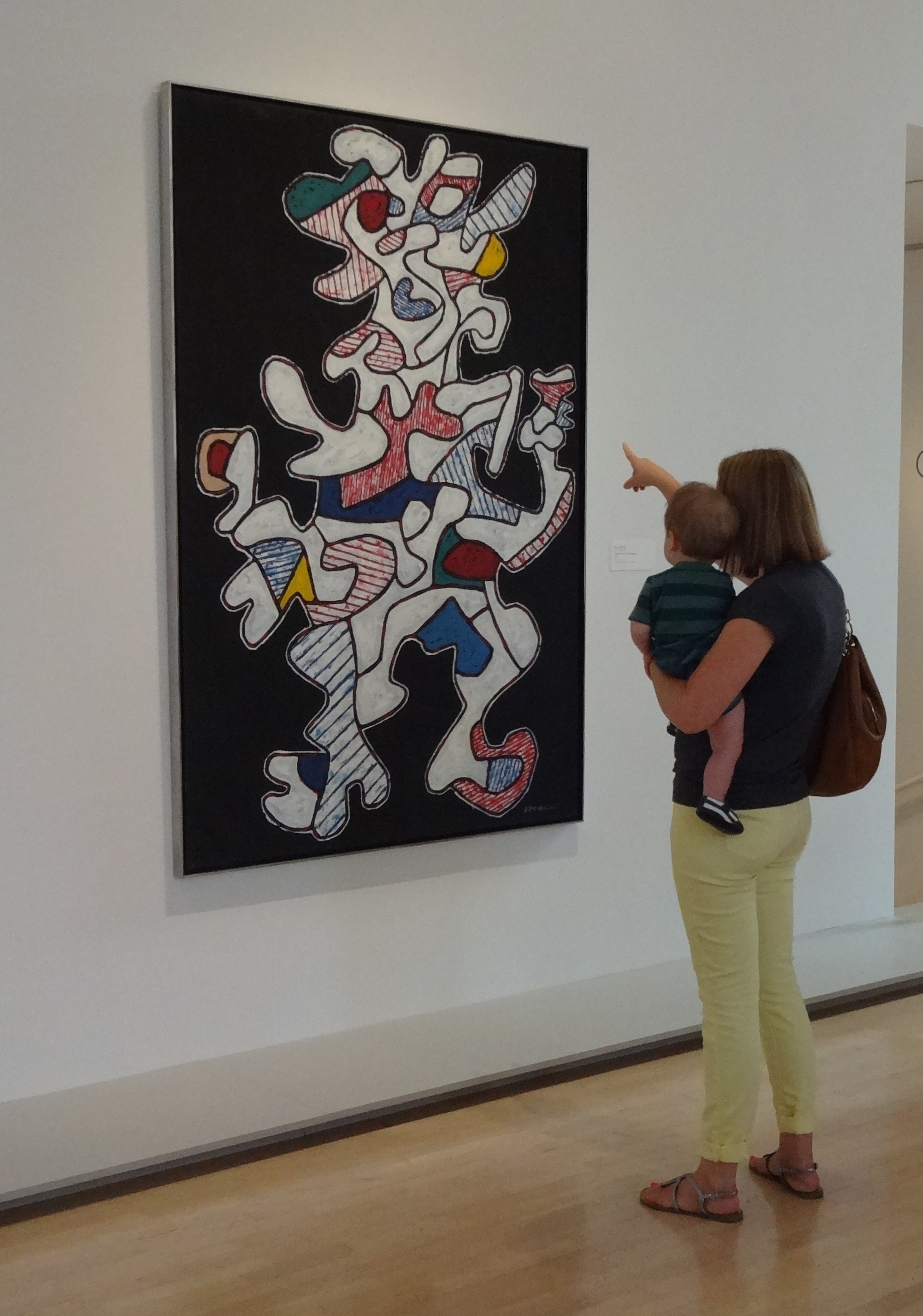Do you think your baby is too young to bring to the DMA? Think again! We are currently testing a potential program for infants (3-23 months) and their parents or caregivers called Art Babies, based on research by Dr. Katerina Danko-McGhee, Director of Education at the Toledo Museum of Art.
Creating a stimulating environment contributes to a baby’s brain development. Visiting the Museum is one way to provide a stimulating environment for your child. Looking at art promotes early neuron connections while talking about art helps early language development.
- Parents look at art with their infants in the European Galleries.
- A mother points out colors in The Reveler by Jean Dubuffet to her infant son.
Now that you know the Museum is a great place for your baby’s development, what kind of art should you look at during your visit? Art that is high in contrast or uses bright bold colors captures a baby’s attention best. Babies like both abstract and representational art; however infants 13-18 months particularly prefer representational art.
Several babies from our first test group were captivated by the contrasting colors of The Divers by Fernand Leger. Portraits also work well, especially faces with big eyes (think of Dora the Explorer) or depictions of babies. Also look for artworks that feature familiar objects such as animals or plants.
You might be wondering, “How can I tell if my baby is interested in a work of art?” Babies communicate their aesthetic preference through body language. They might visually fixate, smile, laugh, or reach toward the object that interests them. When looking at art with your baby, it is best to hold them or have them in a front carrier at a safe distance from the artwork. This allows the baby to physically react to the art they prefer.

Fernand Leger, The Divers, 1942, Dallas Museum of Art, Foundation for the Arts Collection, gift of the James H. and Lillian Clark Foundation
While viewing art with your baby, it’s important to validate the child’s response by being supportive and interactive. When your child reaches toward a particular painting, talk about colors, shapes, or familiar objects in the artwork. This will aid in language development and help them create meaning from familiar objects.
Our first test for Art Babies received positive feedback and parents were amazed at their babies’ reactions to the artworks. Follow the DMA on Facebook or Twitter for future information on this program.
Holly York
McDermott Intern for Family Experiences

